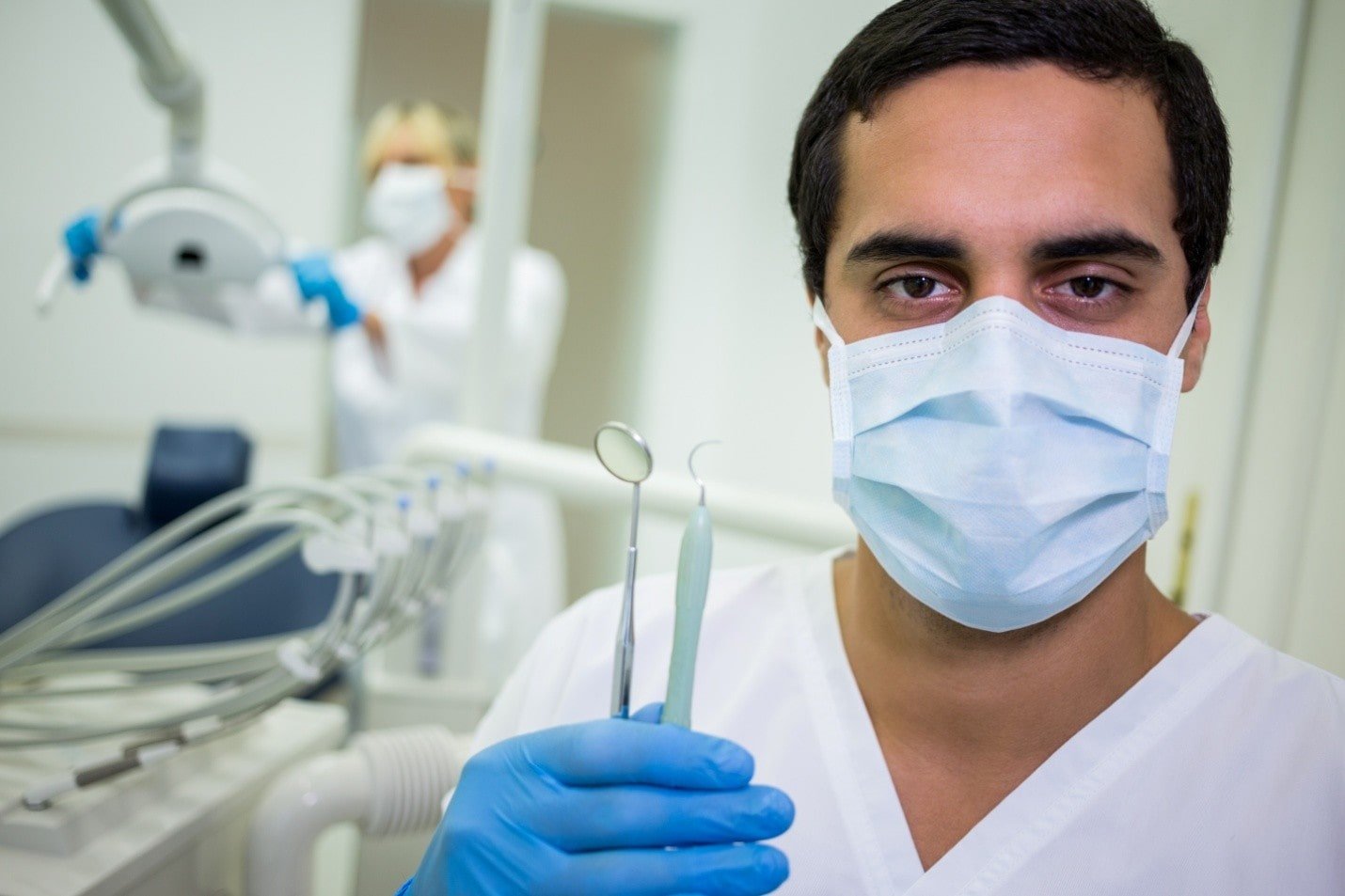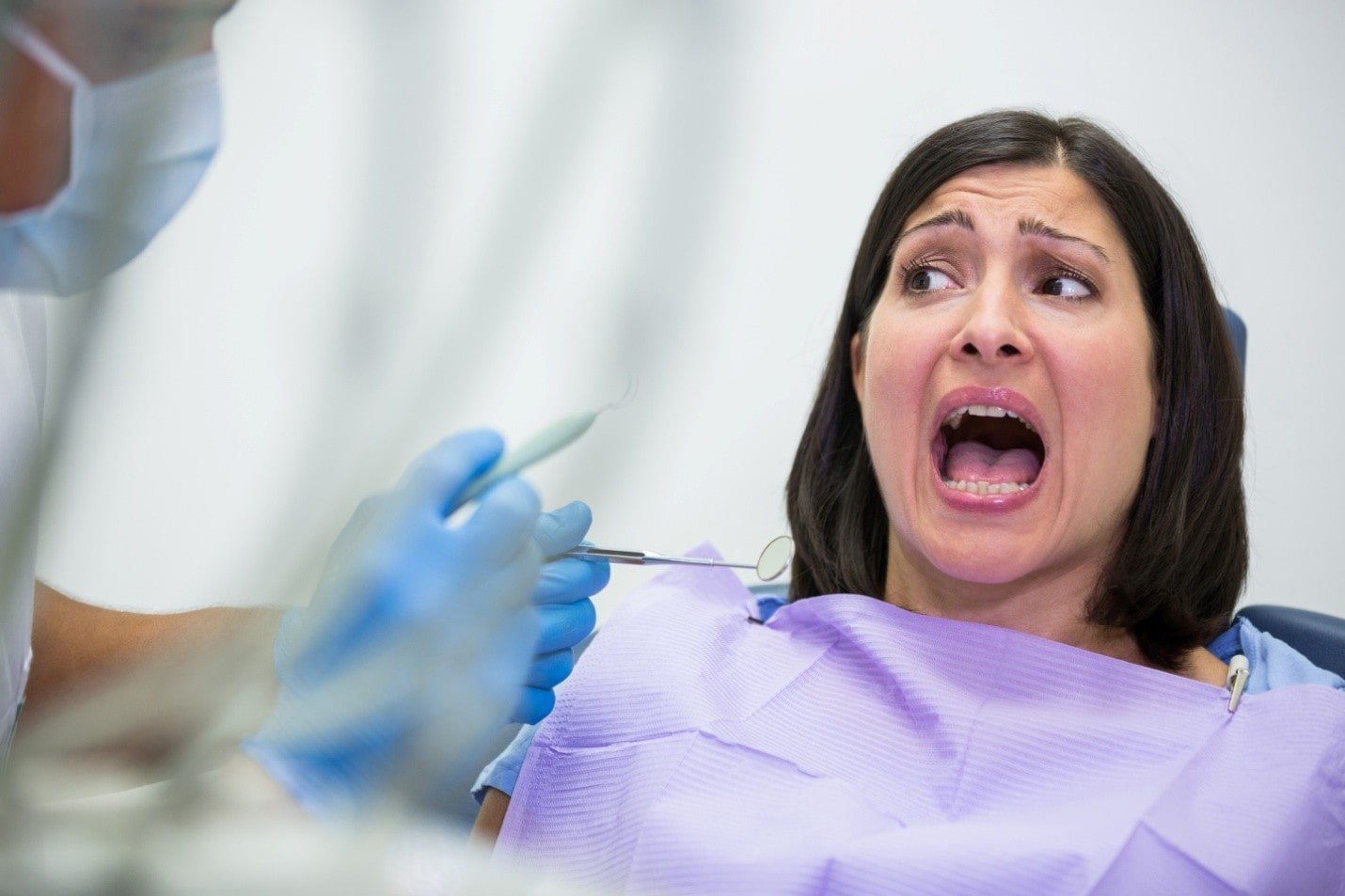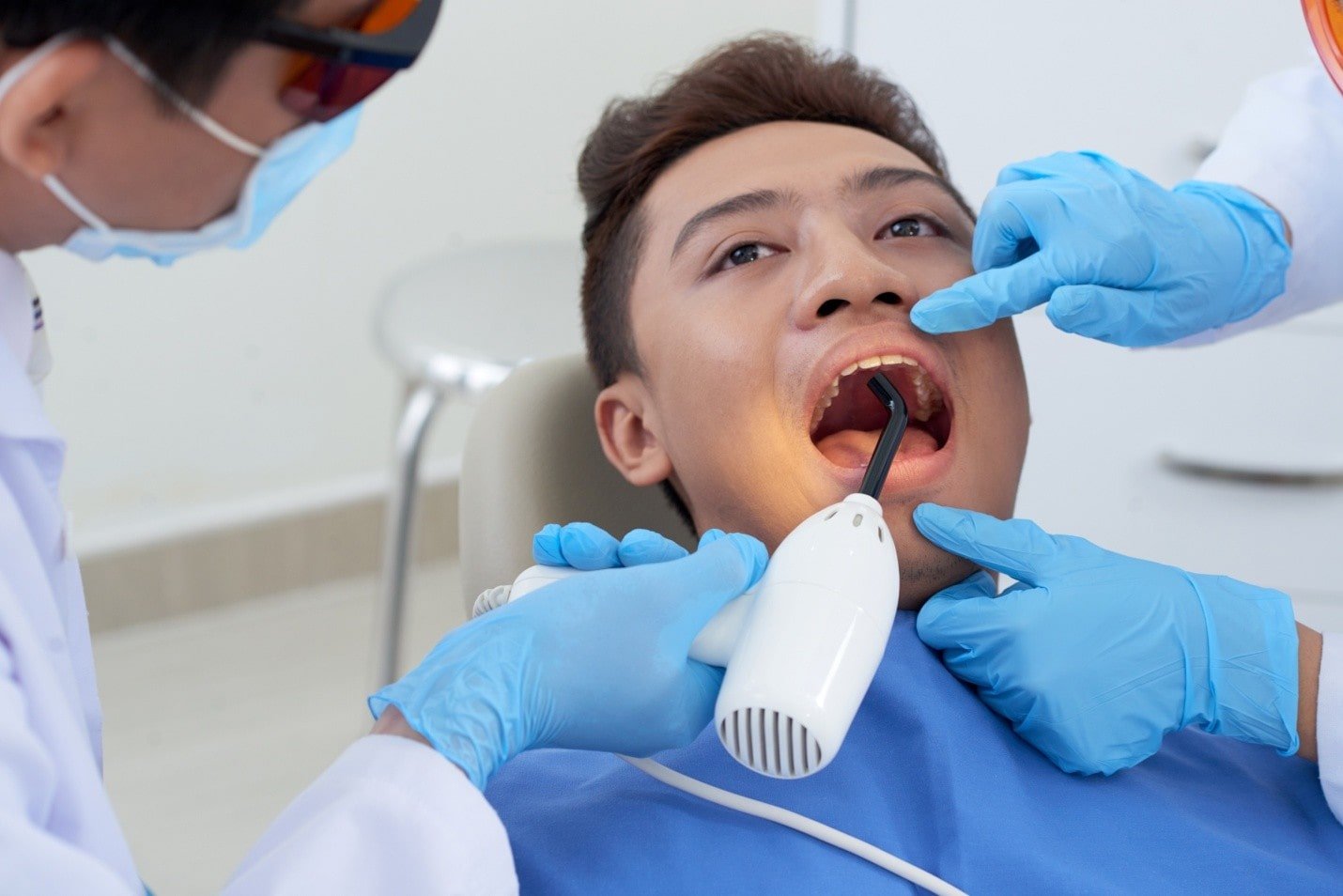Does Dental Prophylaxis Hurt? What You Need to Know
For many people, the thought of visiting a dentist for cleaning brings a mix of relief and anxiety. Relief—because dental cleanings are essential for maintaining oral health. Anxiety—because some wonder if the process will be uncomfortable or painful. The truth is, dental prophylaxis (the professional term for routine dental cleaning) is one of the most beneficial and generally painless preventive procedures in modern dentistry.
Dental prophylaxis is not just about keeping your teeth looking clean and white—it’s a critical step in protecting your gums, preventing cavities, and maintaining long-term oral health. Yet, the fear of discomfort often keeps people from scheduling regular appointments.
In this blog, we’ll clear the air about what dental prophylaxis really involves, whether it hurts, and what you can do to make your experience smooth and stress-free.


What Is Dental Prophylaxis?
Dental prophylaxis, often called a professional teeth cleaning, is a preventive dental procedure designed to remove plaque, tartar, and stains that regular brushing and flossing can’t eliminate. Even with excellent oral hygiene at home, bacteria and deposits can accumulate in hard-to-reach areas over time.
Performed by a dentist or dental hygienist, prophylaxis helps maintain gum health, prevent tooth decay, and protect against serious oral conditions like gingivitis or periodontitis. It’s typically recommended every six months, though people with specific gum issues may need more frequent cleanings.
The procedure not only supports oral health but also contributes to fresh breath and an overall sense of cleanliness that’s hard to achieve at home.
Why Dental Prophylaxis Is Important
Many underestimate how crucial routine dental cleanings are. Beyond maintaining a bright smile, they play a vital role in preventing long-term problems. Here’s why:
- Removes Stubborn Tartar and Plaque: Even with daily brushing, some plaque hardens into tartar (calculus) that only professional tools can remove.
- Prevents Gum Disease: Tartar buildup near the gumline irritates tissues, leading to inflammation and gum disease if left untreated.
- Protects Tooth Enamel: Regular cleanings help remove acidic buildup, reducing enamel erosion and sensitivity.
- Detects Early Dental Issues: During prophylaxis, dentists can identify cavities, receding gums, or other potential issues early on.
- Promotes Fresher Breath: Removing bacteria and buildup helps eliminate persistent bad breath caused by trapped food particles.
- Contributes to Overall Health: Poor oral hygiene is linked to systemic conditions like heart disease and diabetes—prophylaxis supports overall well-being by reducing bacterial load in the mouth.
In short, dental prophylaxis is not just about aesthetics—it’s a vital line of defense for both oral and general health.
Step-by-Step: What Happens During a Dental Prophylaxis
Understanding the process helps ease anxiety and clarify that it’s rarely painful. Here’s a breakdown of what typically happens during a cleaning session:
Oral Examination
Before cleaning, the dentist or hygienist examines your mouth using a small mirror to check for inflammation, cavities, or other abnormalities. This step ensures the treatment is customized to your oral condition.
Scaling
This is the part most people associate with dental cleaning. Using a scaler or ultrasonic device, the hygienist gently removes plaque and tartar deposits from the tooth surface and along the gumline. You may hear scraping sounds, but it shouldn’t hurt. Ultrasonic scalers use vibrations and water spray, making the process faster and more comfortable.
Polishing
Once scaling is complete, the teeth are polished using a rotating brush and a mildly abrasive toothpaste-like paste. This step smooths the tooth surfaces and removes superficial stains from coffee, tea, or tobacco.
Flossing
Next, the hygienist flosses between teeth to remove any remaining debris or polishing paste. It’s also a great opportunity to demonstrate proper flossing techniques.
Rinsing and Fluoride Treatment
After cleaning, your mouth is rinsed to remove all residue. A fluoride treatment may be
applied to strengthen the enamel and help prevent future cavities. The fluoride sits on the
teeth for a few minutes before you rinse again.
The entire procedure typically takes 30 to 45 minutes, depending on your oral health and how
much buildup is present.
Does Dental Prophylaxis Hurt?
The big question—does it hurt?
For most people, dental prophylaxis is not painful. However, the experience can vary based
on individual sensitivity and oral health condition.
Mild Discomfort
Some may feel mild discomfort during scaling, especially if tartar buildup is extensive or gums are inflamed. This is usually described as pressure or sensitivity rather than pain.
Gum Sensitivity
If you have gingivitis or swollen gums, they may bleed slightly during the cleaning. This isn’t a sign of damage—it’s actually a sign that the gums are inflamed and need attention. Regular cleanings will make this bleeding stop over time as gum health improves.
Tooth Sensitivity
After cleaning, some people may feel temporary sensitivity to cold or hot foods. This happens because the removal of tartar exposes areas of enamel that were previously covered. The sensation typically fades within a day or two.
Anesthesia for Sensitive Cases
For patients with severe sensitivity or deep cleaning needs, local anesthesia or numbing
gels can be used to ensure comfort throughout the procedure.
Overall, the discomfort level is minimal and manageable—far outweighed by the benefits of a
clean, healthy mouth.
Factors That Affect Sensitivity During Cleaning
Some factors may make you more likely to feel sensitivity during dental prophylaxis:
- Inflamed or Receding Gums: Exposed tooth roots can be more sensitive to touch or temperature.
- Heavy Tartar Buildup: The thicker the tartar, the more pressure required to remove it.
- Tooth Decay or Enamel Erosion: Damaged teeth are naturally more reactive to stimuli.
- Long Gap Between Cleanings: Skipping regular appointments allows plaque to harden, making the next cleaning slightly more uncomfortable.
Regular dental visits help reduce these issues over time, making each session smoother and more comfortable.
Aftercare: What to Expect After Dental Prophylaxis
Once your cleaning is done, you’ll notice your mouth feels cleaner, smoother, and fresher. Here’s what to expect post-treatment:
- Mild Tenderness: Some may experience slight gum tenderness or tooth sensitivity for 24–48 hours.
- Brighter Smile: The polishing removes surface stains, instantly brightening your teeth.
- Fresher Breath: Plaque removal drastically reduces odor-causing bacteria.
- Healthier Gums: Over time, gums appear pinker, firmer, and less prone to bleeding.
To maintain the results, follow these simple aftercare tips:
- Brush twice daily with a soft-bristled brush.
- Floss daily to prevent plaque buildup.
- Use fluoride toothpaste to strengthen enamel.
- Avoid smoking or staining foods (like coffee or red wine) for at least 24 hours after cleaning.
- Stay hydrated to maintain saliva flow, which helps protect your teeth naturally.
- Schedule your next cleaning every six months—or as advised by your dentist.
With consistent care, your teeth will stay cleaner, and your next visit will likely feel even easier.
Common Myths About Dental Prophylaxis
Let’s clear up a few misconceptions that make people unnecessarily anxious about this routine procedure:
Myth 1: Dental Cleaning Damages Enamel
Professional cleanings use safe instruments and techniques designed to preserve tooth structure. They remove buildup on top of enamel, not enamel itself.
Myth 2: Bleeding Means the Dentist Hurt You
Bleeding gums during cleaning usually indicate inflammation from plaque buildup, not trauma. Regular cleanings actually reduce bleeding over time as gum health improves.
Myth 3: You Don’t Need Cleaning If You Brush and Floss Daily
Even the best brushing can’t remove tartar once it forms. Dental prophylaxis ensures deeper cleaning, especially below the gumline.
Myth 4: It’s Only for People with Dental Problems
Everyone benefits from prophylaxis—even if your teeth look perfect. It helps prevent issues before they start, keeping your oral health in top condition.
The Psychological Benefits of Regular Dental Cleanings
Beyond oral health, there’s also a psychological boost to getting your teeth professionally
cleaned. A polished, fresh smile often improves self-esteem, encourages better hygiene
habits, and even motivates healthier lifestyle choices. Knowing that your oral health is
under control reduces anxiety about future dental issues—a benefit many overlook.
A clean mouth doesn’t just look good; it feels good too. That renewed sense of freshness can
be surprisingly empowering.
How to Prepare for Your Next Dental Prophylaxis Appointment
To make your experience as comfortable as possible, consider the following tips before your appointment:
- Eat a Light Meal: Don’t go hungry, but avoid heavy or sticky foods right before your visit.
- Brush and Floss: This helps remove surface debris, making cleaning smoother.
- Inform Your Dentist: Let them know if you have sensitivity, anxiety, or medical conditions.
- Ask Questions: Understanding the process can ease tension and help you relax.
- Practice Deep Breathing: If nervous, use relaxation techniques during the session.
Most importantly, remember that the dentist’s goal is to make you comfortable while keeping your oral health in check.
Final Thoughts
So, does dental prophylaxis hurt?
For the vast majority of people, the answer is no. At most, you might experience mild
sensitivity or pressure—but the benefits far outweigh any temporary discomfort.
Dental prophylaxis is an essential preventive measure that keeps your smile healthy, gums strong, and teeth protected from decay. Regular cleanings not only prevent serious dental problems but also make each subsequent visit easier and more comfortable.
By combining professional cleanings with consistent home care, you can maintain a confident, healthy smile for years to come—without fear or pain holding you back.

